Definition: What is Environment?
Environment in common terms is referred to surroundings of a living organism, including natural forces and other living things, which provide conditions for development and growth. This is a complex combination of mother nature which includes physical and biotic factors (such as climate, soil, and living things) that act upon an organism or an ecological community and ultimately determine its form and survival
The environment is an important issue even when society is faced with economic crises, wars, and unending social problems. It matters because Earth is the only home that humans have, and it provides air, food, and other needs.
Importance:
Human life support system other life forms and species living on earth. This is commonly referred to as the biosphere, a term coined by Vladimir Vernadsky, a Russian scientist in the 1920s. Biosphere refers to one global ecological system in which all living things are interdependent. Within the overall biosphere or ecosystem, there are smaller ecosystems like the rainforests, oceans, the desert and the tundra.
An ecosystem is composed of living and non-living parts, whether it is terrestrial or aquatic. The non-living parts are the soil, water, air, and nutrients, and living elements are plants, animals, micro-organisms, and humans. A healthy ecosystem has all the chemical elements and nutrients circulating in a cycle while supporting millions of species. The myriad of species all help in the process of cycling elements when they produce food, eat, go about their lives, and even through their deaths. In this process a variety of goods and services are created that are useful for humans.
Factors of environment critical to Human Existence
Food Chain
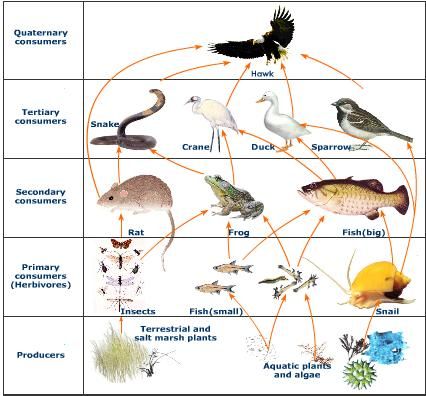 The food chain is critical part of our ecosystem. Encyclopedia Britannica explains that plants use sunlight, water, and elements in soil and air to create food for themselves. They are in turn eaten by animals and micro-organisms. Humans are the top of the food pyramid in any ecosystem because they use plants and animals for food. Earthworms and small insects, like bees pollinating plants, are all part of the environment without whom the food chain would be broken.
The food chain is critical part of our ecosystem. Encyclopedia Britannica explains that plants use sunlight, water, and elements in soil and air to create food for themselves. They are in turn eaten by animals and micro-organisms. Humans are the top of the food pyramid in any ecosystem because they use plants and animals for food. Earthworms and small insects, like bees pollinating plants, are all part of the environment without whom the food chain would be broken.
The University of Minnesota points out that the nutritional value of food has decreased since the 1950s, "so we are now getting less nutrition per calorie in our foods." The Organic Center(pg. 5), explains that as crop yields increase the nutritional value is decreasing, because of industrial farming that relies on monoculture and the excessive use of chemicals as fertilizers and pesticides which has upset many of the natural processes. Due to this, humans should consider the environment important so they don't disrupt the chain and cause problems with their food.
Natural Resources and Benefits
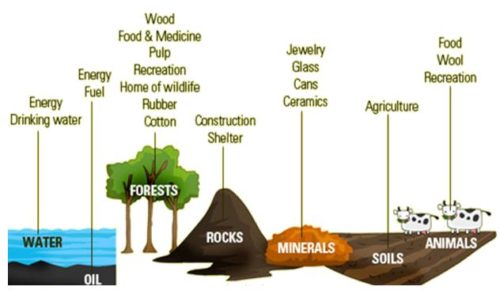 Besides food, ecosystems provide other natural resources critical for human existence. The Economics of Ecosystems and Biodiversity refers to these resources of an ecosystem's as "provisioning services," since people derive nearly all their material needs or provisions this way. The most important are:
Besides food, ecosystems provide other natural resources critical for human existence. The Economics of Ecosystems and Biodiversity refers to these resources of an ecosystem's as "provisioning services," since people derive nearly all their material needs or provisions this way. The most important are:
- Water - Water is important enough to be declared a human right by the United Nations.
- Medicines - Plants have been used as medicines for hundreds of years, and are even now exploited by modern pharmaceuticals.
- Clothing - Clothes are produced from plants like wood pulp, cotton, hemp, jute or animal products like silk, wool, and leather, as listed by Natural Fibres; in addition synthetic clothes are produced from petroleum products say Trusted Clothes.
- Wood - Wood from forests or plantations is used as fuel or in construction and furniture.
- Biofuels - Biofuels, like bioethanol, are extracted from wheat, corn or biomass crops like willow.
- Fossil fuels - Fossil fuels, such as coal, gas and crude oil used in transportation, energy generation and production of plastics and chemicals, depend on dead plant and animal biomass produced by previous ecosystems that are stored and accumulated over millions of years on earth.
Air Quality, Temperature and Disaster Control
 Trees and forests in the environment play an important role in regulating air and climate. Trees produce oxygen when they produce their food through photosynthesis. In addition during this process trees also use carbon dioxide in the air and reduce its concentrations in the atmosphere. This process regulates and maintains the carbon cycle. This is the reason cutting trees leads to global warming.
Trees and forests in the environment play an important role in regulating air and climate. Trees produce oxygen when they produce their food through photosynthesis. In addition during this process trees also use carbon dioxide in the air and reduce its concentrations in the atmosphere. This process regulates and maintains the carbon cycle. This is the reason cutting trees leads to global warming.
Trees can also remove pollutants in the air. Trees and plants also moderate temperatures, making warm places cooler, and providing warmth in cold areas. Natural ecosystems that are undisturbed can moderate severe events and limit their damage. For example, swamps on coasts can slow water flow and hold water from sea storms, and prevent flooding and its associated destruction of habitats and human settlements.
Biodiversity
 Biodiversity is the sum of diversity at various levels: ecosystems, species, populations and genes. A scientific study in 1999 (pg. 2 and 3) estimates that there are 10 million species in the world.
Biodiversity is the sum of diversity at various levels: ecosystems, species, populations and genes. A scientific study in 1999 (pg. 2 and 3) estimates that there are 10 million species in the world.
What Biodiversity Affects - Biodiversity in terms of number of species and individuals (or population size) of a species can also impact many processes in its ecosystem such as:
- Natural cycling of elements, like nitrogen or carbon, and soil fertility
- Water purification and rainwater harvesting
- Pest and disease cycles
- Drought resistance of an area or forest
Our Future - Top 5 Challenges Ahead
Mahatma Gandhi said “Earth provides enough to satisfy every man’s needs, but not every man’s greed.”
Our planet is plagued by environmental problems that deplete natural resources and strain livelihoods, many of which are exacerbated by poor industrial practices. If left unchecked, environmental problems negatively impact businesses both directly, as in supply chain disruptions, and indirectly, as in health hazards that lead to loss of man-hours and efficiency. Following are some common environmental problems that businesses need to address to ensure sustainability and long-term financial viability.
With ever increasing threat caused by environmental changes, pollution and continuous depletion of resources. Our future generations are at risk more than ever before.
Nations, Society & human's cannot afford be careless when it comes to environment as will have disastrous consequences to our planet and the future generations to come.
Deforestation.

Species-rich wild forests are being destroyed, especially in the tropics, often to make way for cattle ranching, soybean or palm oil plantations, or other agricultural monocultures.
Today, about 30 percent of the planet's land area is covered by forests - which is about half as much as before agriculture got started around 11,000 years ago. About 7.3 million hectares (18 million acres) of forest are destroyed each year, mostly in the tropics. Tropical forests used to cover about 15 percent of the planet's land area; they're now down to 6 or 7 percent. Much of this remainder has been degraded by logging or burning.
Not only do natural forests act as biodiversity reserves, they are also carbon sinks, keeping carbon out of the atmosphere and oceans.
Conserve of what's leftof natural forests, and restore degraded areas by replanting with native tree species. This requires strong governance - but many tropical countries are still developing, with increasing populations, uneven rule-of-law, and widespread cronyism and bribery when it comes to allocating land use.
Pollution
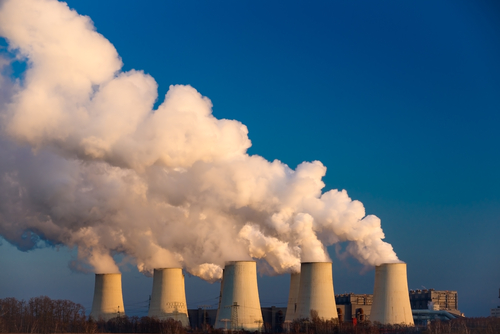 Pollution is one of the world’s biggest environmental problems, as it tends to be a typical byproduct of modern life. Air pollution, for instance, is the result of fossil fuel combustion, as well as various gases and toxins released by industries and factories.
Pollution is one of the world’s biggest environmental problems, as it tends to be a typical byproduct of modern life. Air pollution, for instance, is the result of fossil fuel combustion, as well as various gases and toxins released by industries and factories.
Below are the most common air pollutants today, as well as a discussion of their source processes and effects on health:
- Ozone – A colorless, odorless gas generated when nitrogen oxides (found in motor vehicles and industrial machinery) and volatile organic compounds (found in gasoline, paints, inks and solvents) are exposed to sunlight. Inhaling ozone can trigger health problems including chest pain, cough, throat irritation and congestion, bronchitis, asthma and emphysema.
- Carbon monoxide – A poisonous gas produced by the incomplete combustion of fossil fuels. When inhaled, carbon monoxide reduces the blood’s oxygen-carrying capacity. Exposure to high levels of carbon monoxide can cause death. Aside from being highly toxic, carbon monoxide is colorless, odorless and tasteless, therefore often referred to as the “silent killer”.
- Nitrogen dioxide – A highly reactive gas formed when fuel is burned at high temperatures (such as in motor vehicle exhaust, electric utilities and industrial boilers). Nitrogen dioxide reacts with water and oxygen to make nitric acid, one of the main components of acid rain. Nitrogen dioxide can irritate the lungs and increase susceptibility to respiratory ailments.
- Particulate matter – Very small solid particles and liquid droplets suspended in the air. Short-term exposure to particulate matter can cause irritation to the eyes, nose and throat, as well as heart and lung ailments. Prolonged exposure can lead to hospital admissions and premature death due to cardiovascular and respiratory diseases.
- Sulfur dioxide – A highly reactive and pungent-smelling gas formed by the incineration of fossil fuel at industrial facilities such as power plants. Other processes that generate sulfur dioxide are sea spray and the decomposition of organic matter. Inhalation of sulfur dioxide can cause wheezing, chest tightness and shortness of breath, as well as heart and lung ailments.
- Lead – A common ingredient in many manufactured products. Gasoline and paint are the major sources of lead emissions. Exposure to lead can cause kidney disease, nervous system disorders, mental retardation, learning disabilities, miscarriage, stillbirth, premature birth and death.
The costs of pollution go beyond medical bills and loss of productivity. Heavily polluted areas make it difficult for companies located there to hire and retain workers, forcing them to pay higher wages to attract and keep employees. In addition, unchecked pollution can temper investors’ interest. To produce their products safely, companies in heavily polluted areas may need to close shop and move their operations to less polluted locations.
Waste Disposal
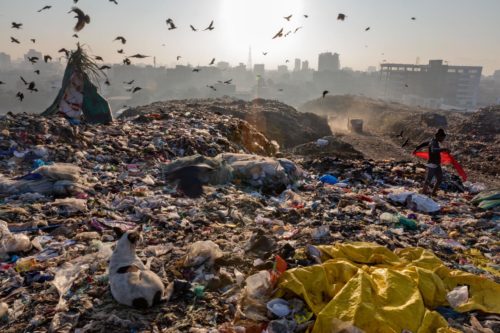 As populations and industries grow, so does the problem of proper waste disposal. Communities accumulate so much garbage that properly disposing of it has become increasingly difficult. Solid garbage, for example, is usually buried in landfill sites or incinerated, which is extremely harmful to the environment. Decomposing garbage may attract vermin, give off a foul smell or leach into groundwater. The smoke given off by burning garbage contributes to air pollution.
As populations and industries grow, so does the problem of proper waste disposal. Communities accumulate so much garbage that properly disposing of it has become increasingly difficult. Solid garbage, for example, is usually buried in landfill sites or incinerated, which is extremely harmful to the environment. Decomposing garbage may attract vermin, give off a foul smell or leach into groundwater. The smoke given off by burning garbage contributes to air pollution.
Certain byproducts of the manufacturing process amplify the need for improved waste disposal. Efficiency is sometimes pursued at the expense of environmental sustainability. To produce as much as possible in the most cost-effective manner, manufacturers may adopt practices that appear to be cheap, but are actually resource-intensive in the long run. These practices generate byproducts that cannot be reused and must be disposed of.
A good starting point towards the zero-waste ideal is the circular economy model associated with other concepts such as the “cradle to cradle” design and industrial ecology. The idea here is that instead of products eventually being buried or burned, as in most linear models of production, their parts are designed from the beginning to be re-used and processed for re-entry into the production cycle.
For example, Google's Project Ara initiative addressed the challenge of outdated mobile phones by reinventing consumers’ smartphone usage. By breaking down a phone into replaceable parts that can be assembled and customized according to user requirements, consumers easily alter their phone with simple skills and tools. Phone repair is done more easily and inexpensively by replacing only what is broken instead of the entire phone. Google found a way to maximize a phone's lifetime usage and reduce the need to use new resources for new phones, while minimizing the amount of its generated e-waste.
In Europe, Philipshas 22 service organizations that are collecting 40% of lamps that contain mercury. The company has a recycling rate greater than 95% in the market. Philips also started to sell lighting as a service to enhance the collection of their lighting equipment. They aim to reach more customers as the company retains ownership of the lighting equipment so customers don’t have to pay for lighting upfront. In addition, Philips guarantees comprehensive environmental management pertaining to the recycling of their lighting equipment.
Climate Change
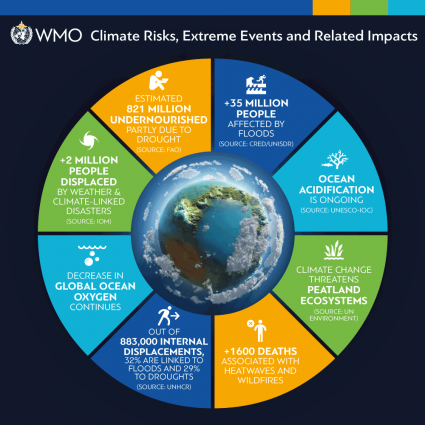 In his encyclical Laudato si , Pope Francis urged action on climate change, warning that climate change is real and a problem that we can no longer afford to ignore:
In his encyclical Laudato si , Pope Francis urged action on climate change, warning that climate change is real and a problem that we can no longer afford to ignore:
“Climate change is a global problem with grave implications: environmental, social, economic, political and for the distribution of goods. It represents one of the principal challenges facing humanity in our day. If present trends continue, this century may well witness extraordinary climate change and an unprecedented destruction of ecosystems, with serious consequences for all of us.”
Shoreline erosion, coastal flooding and greater storm surges cause significant damage to coastal property and infrastructure. Cities, inhabited islands and tidal wetlands will be more prone to flooding. These can indirectly lead to business losses in the form of operational disruptions among suppliers, which in turn affect the rest of the supply chain and customers. In addition, floodwater can bring waterborne diseases that are harmful to people, plants and livestock.
Climate change can also trigger a higher demand for energy. As the climate gets warmer, people consume more electricity for air conditioning. Greater electricity consumption, in turn, means higher operational costs for businesses. Furthermore, a higher energy demand translates to increased consumption of natural resources such as fossil fuel and water, resulting in a lack of resources for companies to turn into products and services.
Climate change has negative effects on agricultural productivity. Increased temperatures and carbon dioxide levels can be beneficial to some crops, but this benefit can only be realized if other conditions like nutrient levels, soil moisture and water availability are also adjusted. Otherwise, crop yields may decrease. Crops may also become more susceptible to diseases, given that some weeds, pests and fungi grow in warmer temperatures.
Wheat, for example, is an important food crop that grows in cool temperatures. Rising temperatures will stress wheat crops and lower their yields. This explains why, according to a December 2014 study that was published in Nature Climate Change , every 1°C increase in global temperatures means a 6% fall in wheat production . Falling wheat production would make it difficult for food manufacturers to produce vital foodstuffs such as cereal, bread, noodles and pasta. Plus, in order to maintain optimal yields, wheat growers would have to use chemical pesticides and fertilizers that are hazardous to both human health and the environment.
Drought/Inadequate Access to Water
 The world’s water supply is becoming increasingly scarce. According to the WHO/UNICEF Joint Monitoring Programme for Water Supply and Sanitation (JMP), 2.5 billion people (roughly 36% of the world’s population) still lack access to improved sanitation facilities.748 million people continued to get their drinking water from unsafe sources in 2012. The World Wildlife Fund cautions that by 2025, water shortages will affect about two-thirds of the world’s population .
The world’s water supply is becoming increasingly scarce. According to the WHO/UNICEF Joint Monitoring Programme for Water Supply and Sanitation (JMP), 2.5 billion people (roughly 36% of the world’s population) still lack access to improved sanitation facilities.748 million people continued to get their drinking water from unsafe sources in 2012. The World Wildlife Fund cautions that by 2025, water shortages will affect about two-thirds of the world’s population .
Some of these shortages can be attributed to climate change. For example, the California drought, which is entering its fourth year, is said to be caused by rising temperatures and changing atmospheric patterns conducive to diminishing rains. California’s climate is normally characterized by a concentrated rainy season followed by a long and temperate dry period. In the last three years, the rains have not come, with precipitation levels only being at 5% of the historical average.
Such water shortages have a detrimental effect on agriculture. Farms are dependent on water for irrigation, so a decrease in water supply will drastically affect their productivity. Farms will have smaller yields, which means manufacturers will also have fewer raw materials to turn into products and services. Climate change-related water issues cost Unilever between $300m and $400m every year .
If the water supply in a particular area gets critically low, businesses in that area may be forced to move their operations to where water supply is still sufficient. Water is needed in almost every aspect of business operations, from running machines, to keeping the office premises clean. Relocation forces businesses to spend on new facilities and equipment, as well as on hiring and training new staff.
Understand the global water crisis through facts and numbers - Global Water CrisisWater Pollution
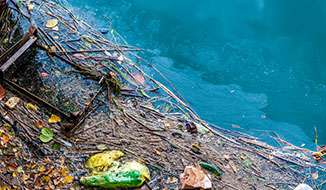 Water covers 70% of the Earth’s surface. It’s a critical resource for the survival of all humans and the environment. Water pollution goes hand-in-hand with air pollution when it comes to environmental concerns. It affects not just large but also small bodies of water around the world. Polluted water also affects entire ecosystems that exist in the water.
Water covers 70% of the Earth’s surface. It’s a critical resource for the survival of all humans and the environment. Water pollution goes hand-in-hand with air pollution when it comes to environmental concerns. It affects not just large but also small bodies of water around the world. Polluted water also affects entire ecosystems that exist in the water.
Water pollution is the contamination of water, which causes a decrease in its quality. Pollution occurs when harmful substances contaminate water. The pollutants make it toxic to humans and the environment. Supported Read >> https://www.erizon.com.au/top-environmental-concerns/#chapter-four






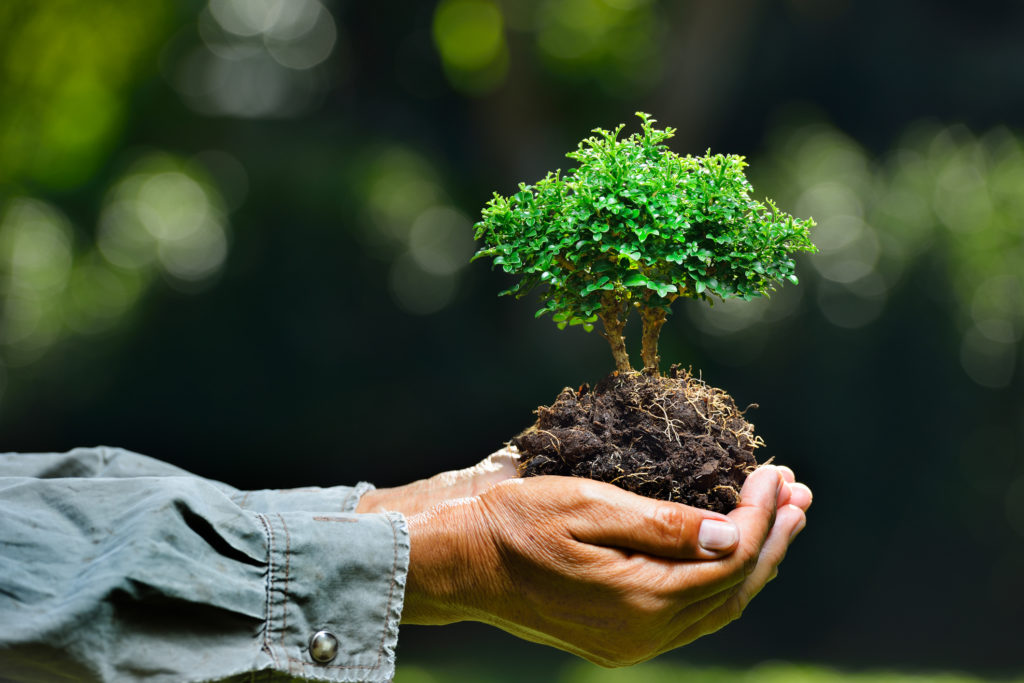

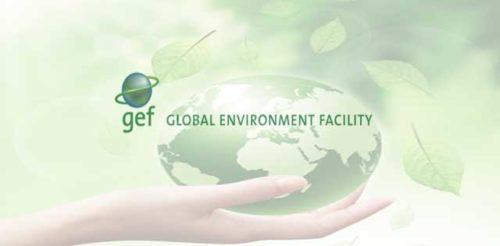
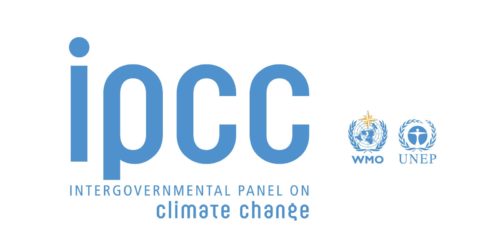
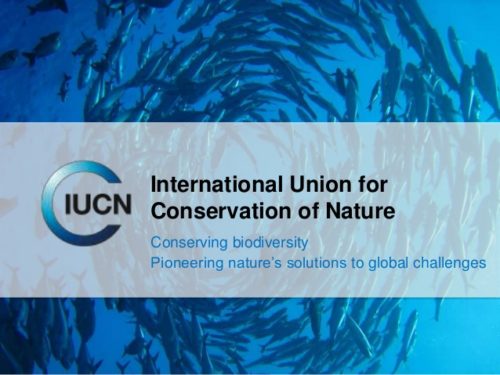



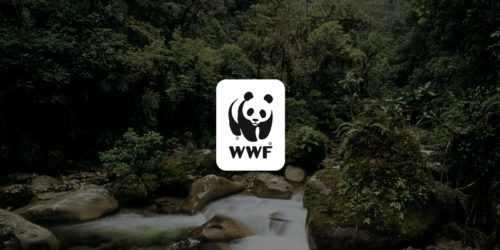




Leave a Reply